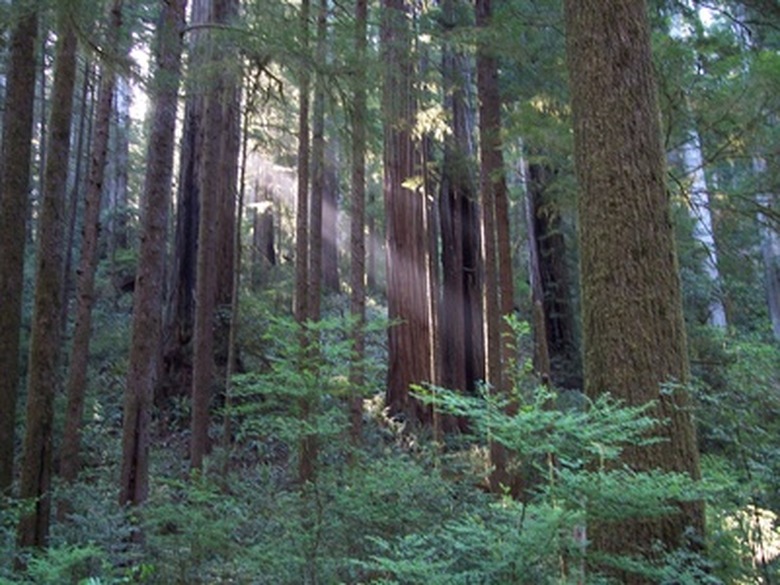California Coastline Natural Resources
California, known as the Golden State, abounds with a wide range of natural resources. A varied terrain makes life possible for many unusual plant and animal variations. With both the highest and lowest points in the continental United States (Mt. Whitney and Death Valley, respectively) the wide range of elevation is also a factor in resources. The coastal regions are no exception. From cold, rocky cliffs to warm, sandy beaches, the California coast stretches 840 miles long. It is no wonder there is such a variety of coastal resources.
Forests
Forests
There are five major tree communities in the coastal regions of California: Douglas-fir, mixed-evergreen, closed-cone, Riparion and redwood. Many of the California redwoods exceed 200 feet, many even reaching 369 feet and 15 feet in diameter. Some of the redwoods are estimated to be 2,200 years old. There are very few other forests that are structured similarly to these redwood forests and one of the other three is the Giant Sequoia Groves in the Sierra Nevada range in California.
The redwood forest covers over 5,100 square miles, which is slightly larger than the state of Connecticut. The Redwood forests are home to many distinct species of plants and animals. Animals that find a home here are bears, fishers, pine warblers, including the endangered marbled murrelet, many types of amphibians, fish and insects.
Wetlands
Wetlands
Coastal wetlands are comprised of natural communities that have a combination of aquatic, semi-aquatic, and terrestrial habitats. Wetlands provide a habitat for many organisms, including many endangered species.
The coastal wetlands produce high levels of oxygen and filter toxic chemicals out of water. They also reduce flooding and erosion. While the value of wetlands was not understood in the early 1900's, efforts have been made in recent years to restore the natural habitats for many endangered species by establishing wetland reserves. Concentrated efforts have been made by the California Resources Agency in different areas of the California coast, totaling near 58,000 acres.
Mountains
Mountains
California's coastal mountain ranges span 800 miles of the 840 mile coastline. Breaking only at the Golden Gate, the coast ranges provide a continuing line of mountains and valleys stretching from the northwest corner of the state to the Mexican border. The mountain ranges also form a separation in the state of California, dividing the coast from the interior deserts and Central Valley region. The mountain ranges provide a place for timber industries and the cool coastal fog, combined with the hot inland valleys, creates a prime environment for cultivating wine grapes. The temperate climates moderated by these vast, coastal ranges allow a wide variety of fruit and nut trees to flourish. Many cool weather vegetables, such as spinach, can be grown in these areas of the state. 73 percent of the spinach grown in California comes from Monterey County. California produces 74 percent of the spinach grown in the United States, made possible by the cool climate near the coastal ranges.
Cite This Article
MLA
Dalzell, Laurel. "California Coastline Natural Resources" sciencing.com, https://www.sciencing.com/california-coastline-natural-resources-6892229/. 22 November 2019.
APA
Dalzell, Laurel. (2019, November 22). California Coastline Natural Resources. sciencing.com. Retrieved from https://www.sciencing.com/california-coastline-natural-resources-6892229/
Chicago
Dalzell, Laurel. California Coastline Natural Resources last modified March 24, 2022. https://www.sciencing.com/california-coastline-natural-resources-6892229/
